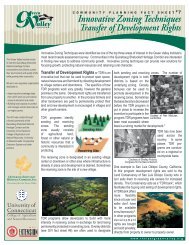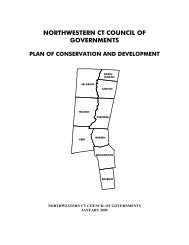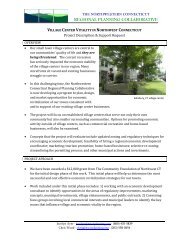Using GIS to Determine Horizon Belts[2]
Using GIS to Determine Horizon Belts[2]
Using GIS to Determine Horizon Belts[2]
You also want an ePaper? Increase the reach of your titles
YUMPU automatically turns print PDFs into web optimized ePapers that Google loves.
The main tasks of the methodology are listed and annotated as follows:<br />
Create a triangulated irregular network (TIN) model and viewshed ridgeline data<br />
DEMs are a type of raster data representing terrain as a series of discrete steps, 10<br />
meters squared. TIN models can be derived from DEMs, and are a more realistic<br />
representation of terrain with a surface of continuous elevation change. The ArcView 3D<br />
Analyst Extension was used <strong>to</strong> generate a TIN for the <strong>to</strong>wn of Kent. Lakes are features<br />
of constant elevation and were used as breaklines for refining the TIN model, assigning<br />
those areas of the model a constant elevation. Viewshed ridgelines were derived from the<br />
boundaries delineated in the subbasins data, after eliminating subbasin boundaries that do<br />
not correspond with <strong>to</strong>pographically distinct ridges. Some <strong>to</strong>pographically distinct ridges<br />
not corresponding <strong>to</strong> a subbasin boundary were manually added.<br />
Create the road viewpoints file<br />
The road viewpoints were obtained from public roads in the <strong>to</strong>wn of Kent.<br />
Viewpoints were chosen that corresponded <strong>to</strong> intersections of these road segments with<br />
other roads, the <strong>to</strong>wn boundary, subbasin boundaries (an indica<strong>to</strong>r of high points along<br />
the road), or known vistas (Figure 1). The viewpoints were converted <strong>to</strong> a 3D file, with<br />
the elevation derived from the TIN model, and a target offset (OffsetB) value of 35 feet<br />
was assigned as an attribute <strong>to</strong> each viewpoint.


![Using GIS to Determine Horizon Belts[2]](https://img.yumpu.com/38917728/4/500x640/using-gis-to-determine-horizon-belts2.jpg)




